Co-Benefit Assessment of Active Transportation in Delhi, Estimating the Willingness to Use Nonmotorized Mode and Near-Roadway-Avoided PM2.5 Exposure
Abstract
1. Introduction
1.1. Physical Inactivity and Health Impacts
1.2. Nonmotorized Transport in Delhi
1.3. Co-Benefits of Nonmotorized and Active Transport
1.4. What Will Be Elucidated in This Research: Model Development
2. Materials and Methods (Model Development)
2.1. PA Estimation Model: Estimation of the Weekly Time Spent Walking and Cycling for Transportation
2.2. Near-Roadway-Avoided PM2.5 Exposure Model
2.3. Health Impact Assessment Model
2.4. Economic Impact Assessment Model
3. Results and Discussion
3.1. Willingness of People in Delhi to Use NMT
3.2. Near-Roadway-Avoided PM2.5 Exposure from Replacing the Distance Traveled by Private Vehicles with Walking and Cycling in Delhi
3.3. Public Health and Economic Co-Benefits from Replacing Distance Traveled by Private Vehicles with Walking and Cycling in Delhi
4. Conclusions
Author Contributions
Funding
Institutional Review Board Statement
Informed Consent Statement
Data Availability Statement
Acknowledgments
Conflicts of Interest
Appendix A
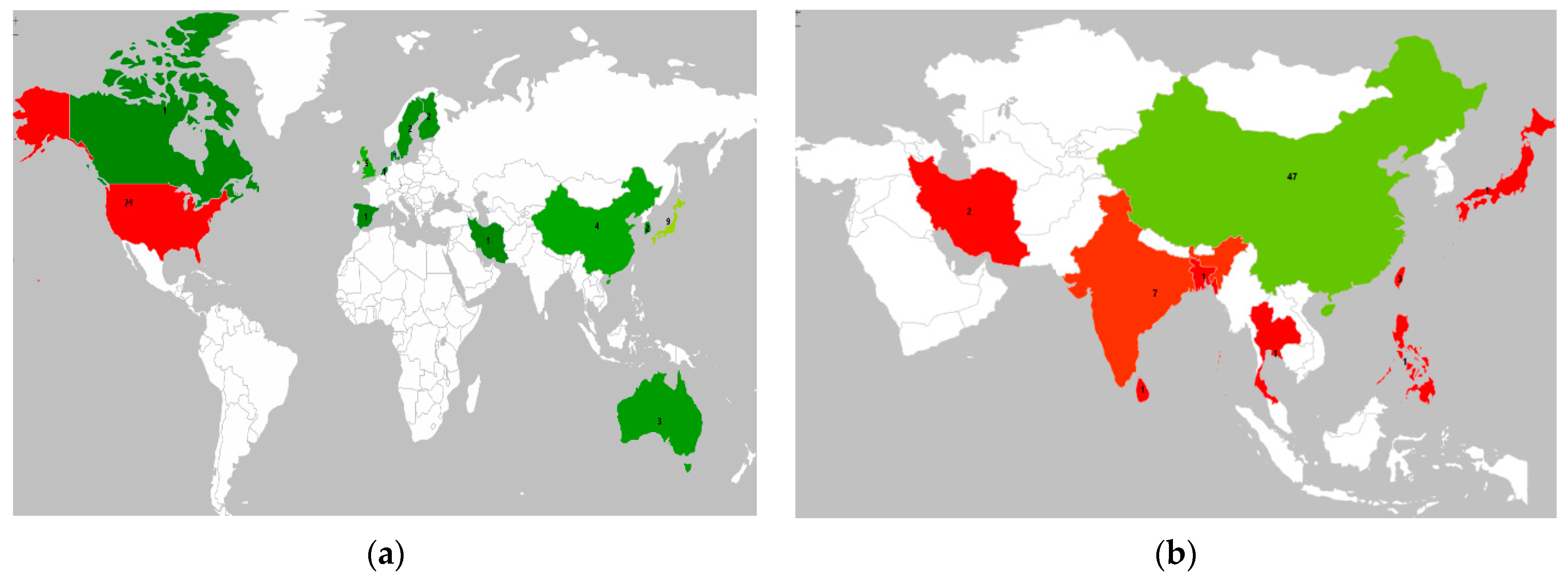
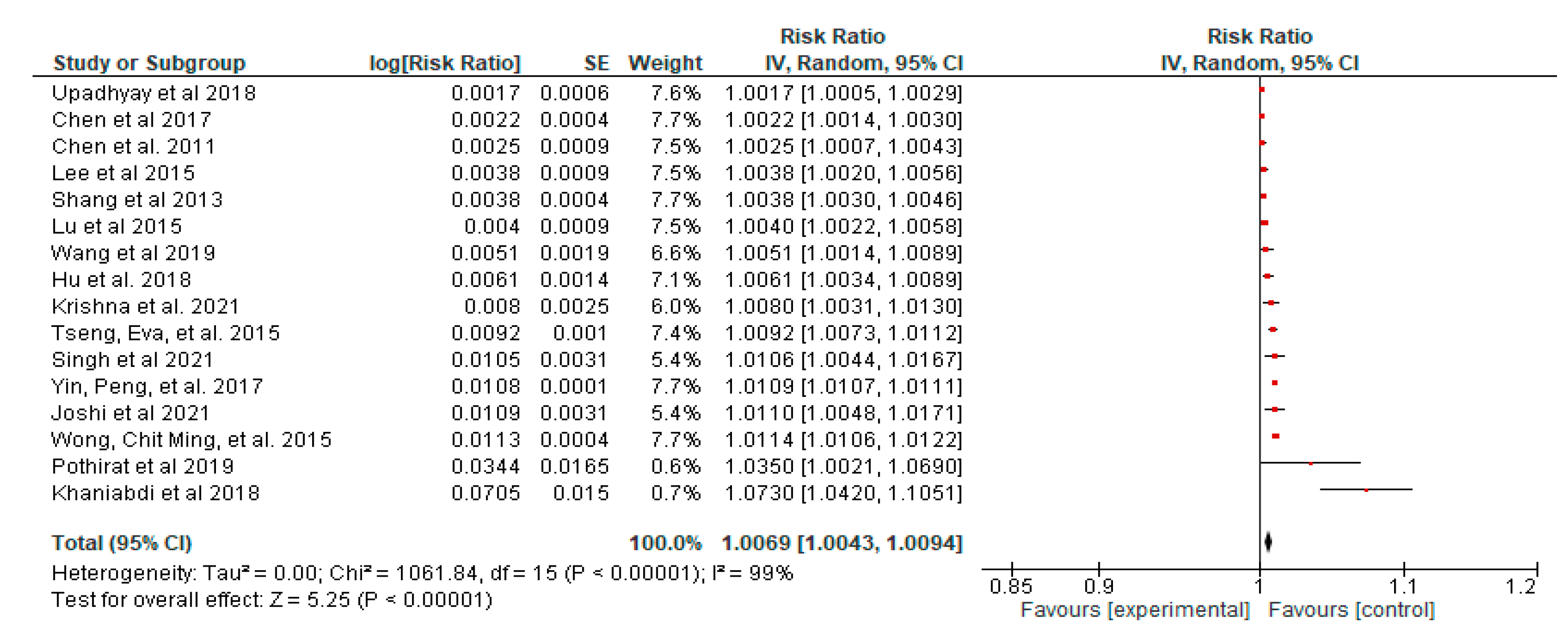

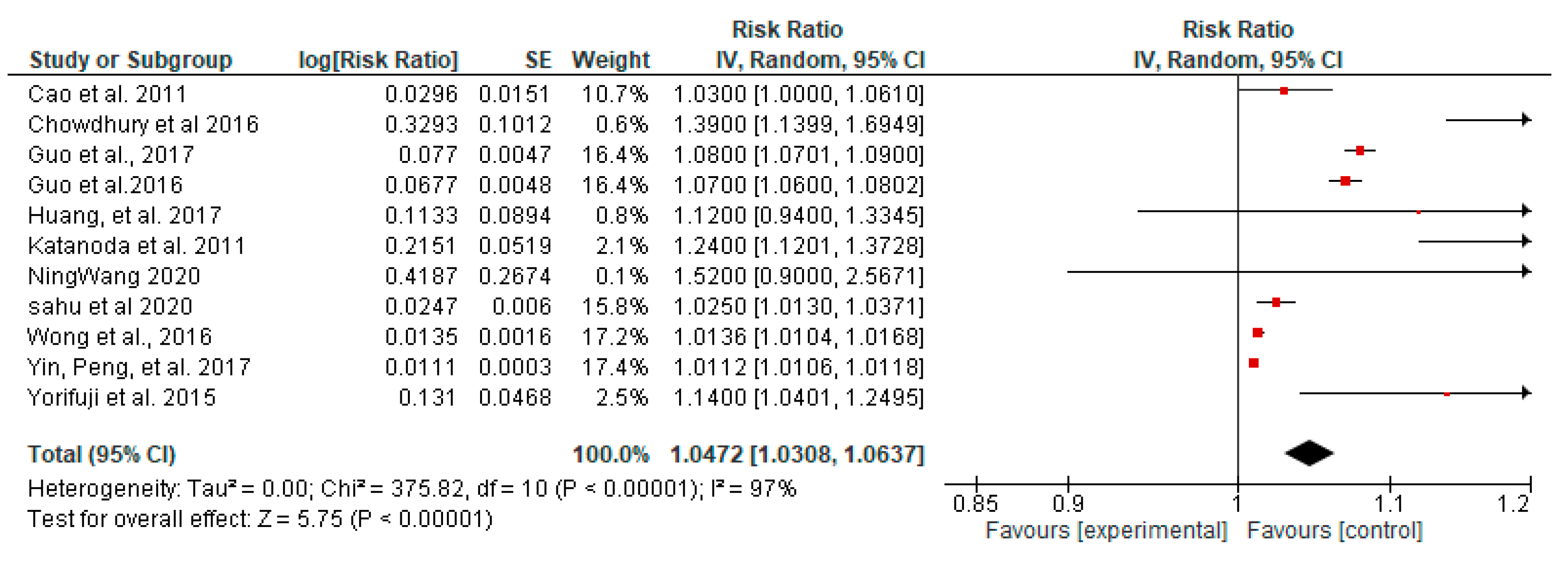
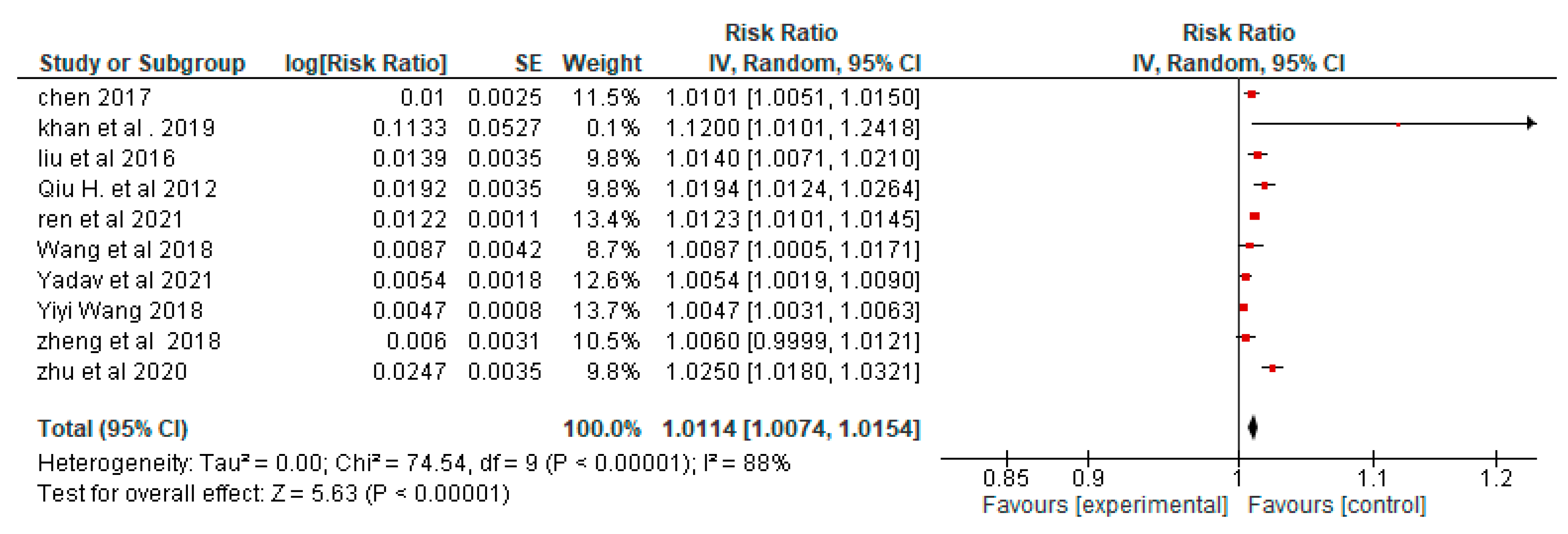

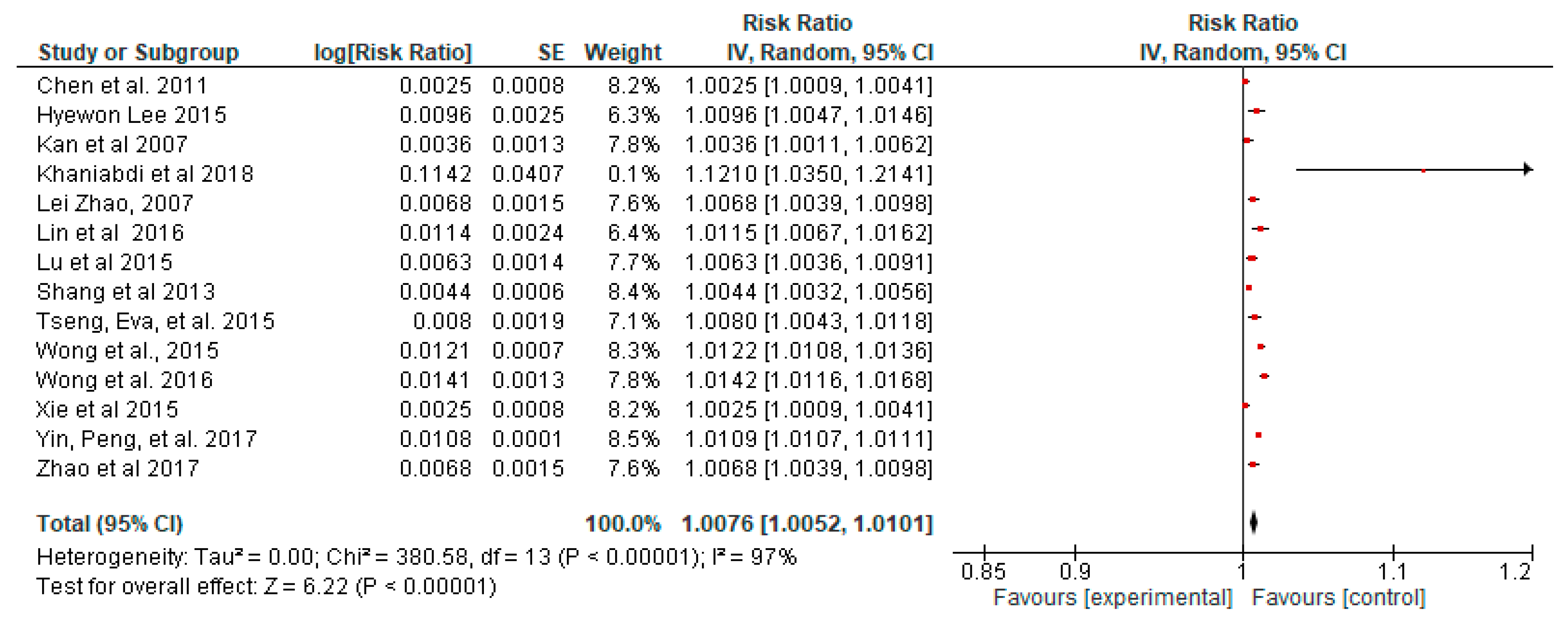
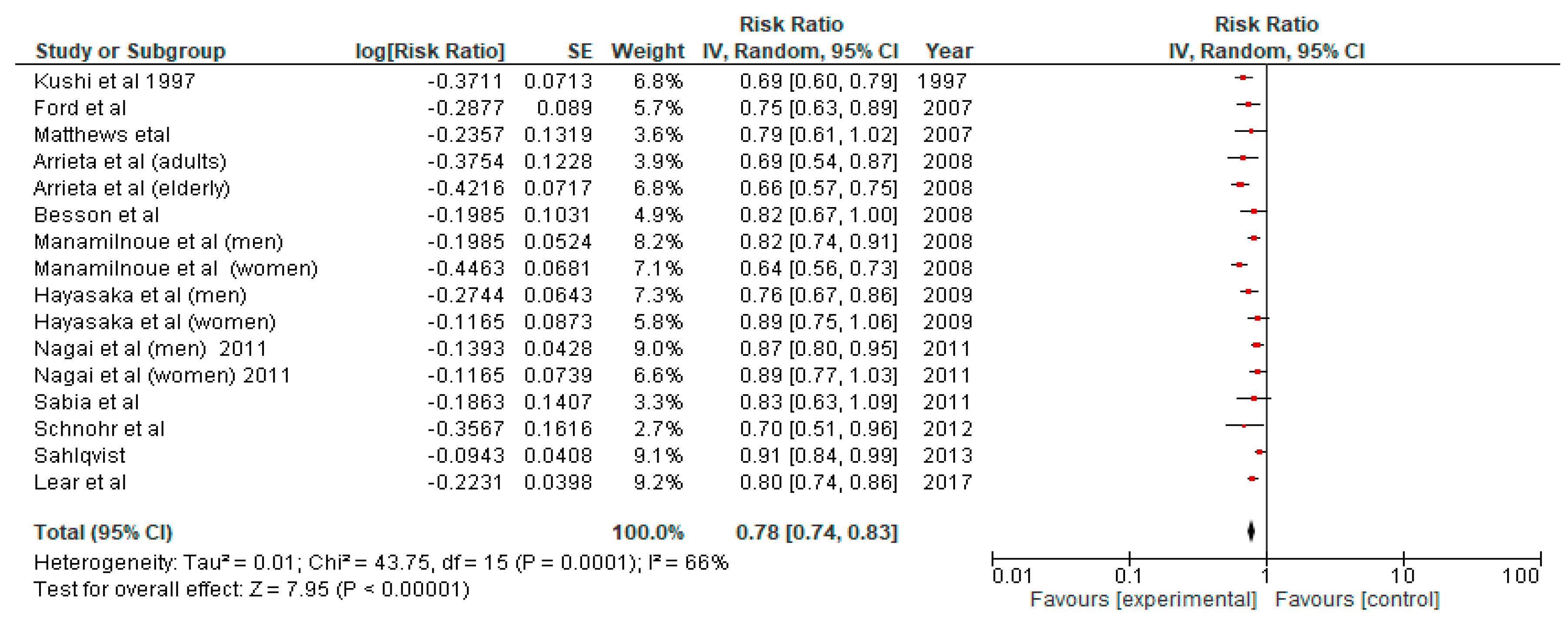
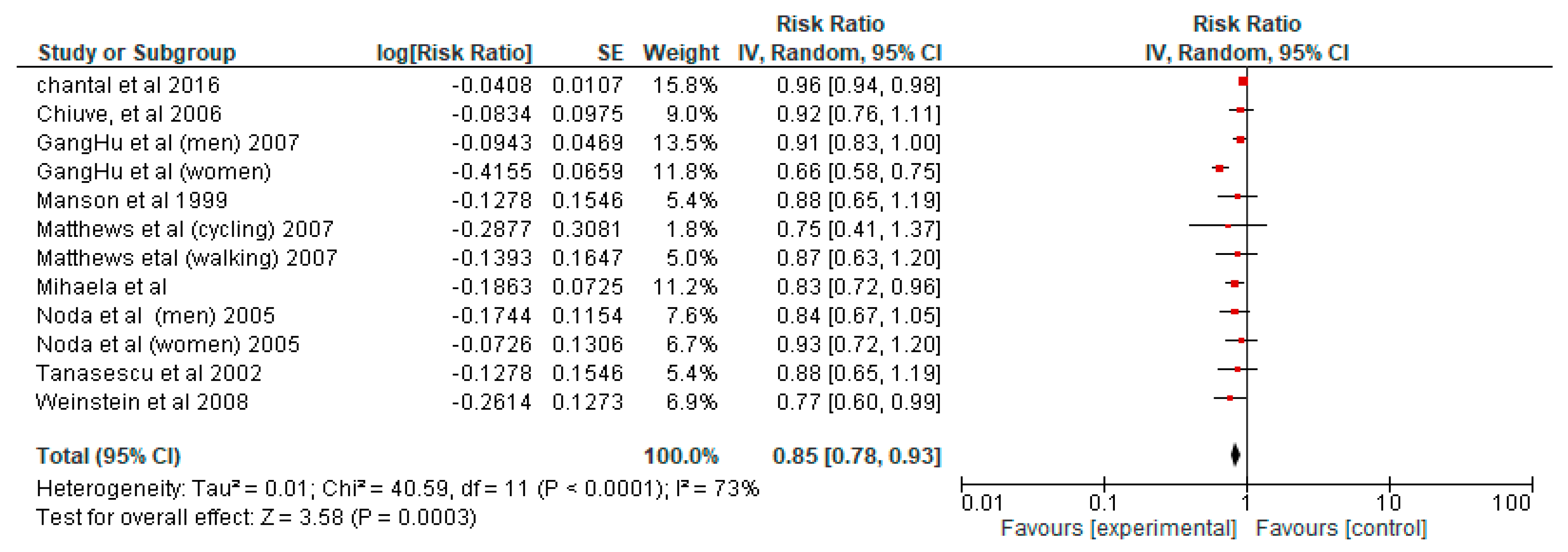

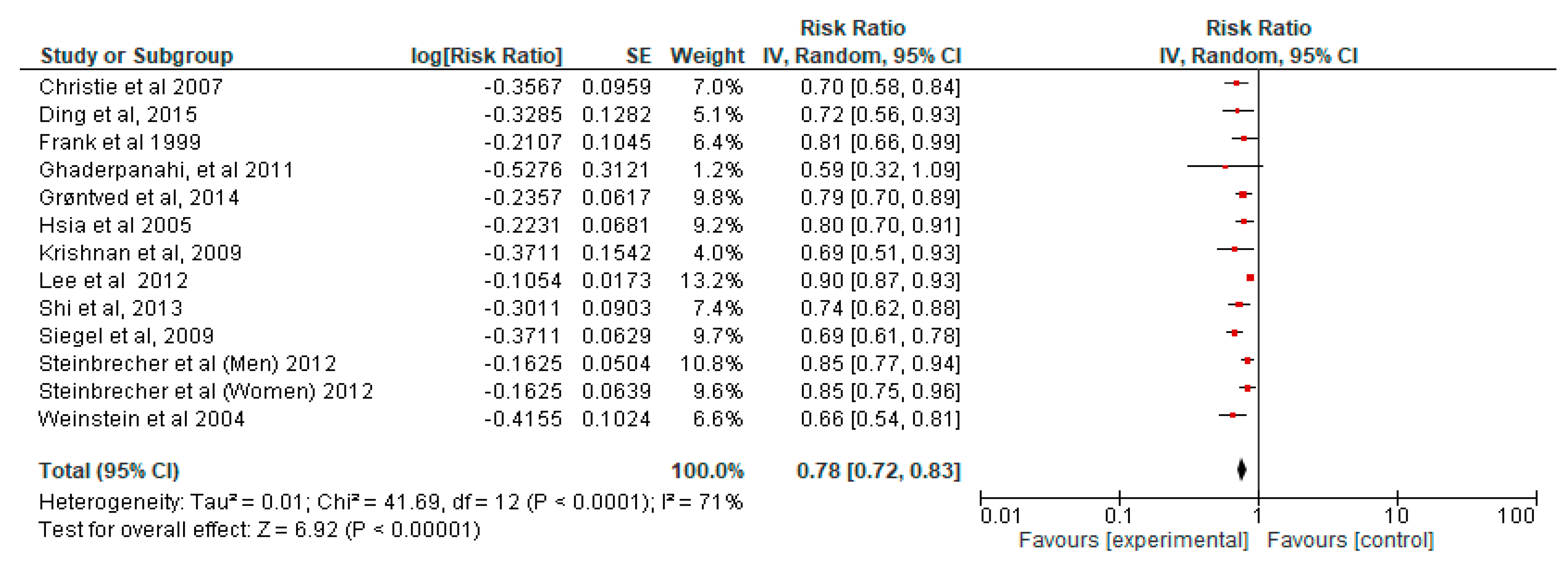

Appendix B
| Variables | Categories | Characteristics | Frequencies (%) |
|---|---|---|---|
| Willingness to walk | Yes No | Willed to use walking as a regular travel mode Unwilled to use walking as a regular travel mode | 85 (30.35%) 198 (69.95%) |
| Willingness to bicycle | Yes No | Willed to use bicycling as a regular travel mode Unwilled to use bicycling as a regular travel mode | 109 (38.52%) 174 (68.48%) |
| Regular travel mode | Public transport Private car Motorcycle | Used public transport as a mandatory travel mode Used private car as a mandatory travel mode Used motorcycle as a mandatory travel mode | 99 (34.98%) 96 (33.92%) 88 (31.10%) |
| Distance to cover by walking | Short distance Long distance | Preferred to walk for 1–2 km of distance Preferred to walk for more than 2 km of distance | 96 (33.92%) 187 (66.08%) |
| Distance to cover by bicycling | Short distance Long distance | Preferred to use the bicycle for 1–2 km of distance Preferred to use the bicycle for more than 2 km of distance | 19 (6.71%) 264 (93.29%) |
| Monthly income | Low income Medium income High income | Monthly income of below 15,000 INR Monthly income of between 15,000 and 75,000 INR Monthly income of above 75,000 INR | 90 (31.80%) 172 (60.78%) 21 (7.42%) |
| Education level | Illiterate Primary to secondary High | No education Studied up to school Graduated or higher studies | 25 (8.83%) 91 (32.16%) 167 (59.01%) |
| Age group | Young Middle-aged Old | Aged between 10 and 18 years Aged between 18 and 45 years Aged above 45 years | 18 (6.36%) 224 (79.15%) 41 (14.49%) |
| Gender | Male Female | Male respondents Female respondents | 200 (70.67%) 83 (29.33%) |
| Question | Response |
|---|---|
| 1. Willing to use NM modes (bicycle) |
|
| 2. Willing to use NM modes (walking) |
|
| 3. Mandatory travel mode to work, school, business |
|
| 4. Nonmandatory travel mode to shopping, personal, family, etc. |
|
| 5. Age-wise distribution |
|
| 6. Gender-wise distribution |
|
| 7. Occupation level |
|
| 8. Monthly income level |
|
| 9. Education level |
|
| 10. For which distance you prefer bicycles/walking as your transport mode? |
|
| Personal vehicle ownership |
|
| 11. What are the main barriers towards walking and cycling in urban area? |
|
Appendix C
| Vehicle Type | Total VKM Per Year (Millions) | Reduced VKM (Millions) | Reduced PM2.5 (Tons) | Reduced CO2 (Kio Tons) |
|---|---|---|---|---|
| Car | 6358.93 | 426.69 | 64.01 | 73.8 |
| Motorcycle (2-wheeler) | 11,624.63 | 780.02 | 56.95 | 35.6 |
| Three wheelers | 2430.98 | 163.12 | 17.95 | 12.1 |
| Total | 20,414.53 | 1369.82 | 138.9 | 121.5 |
References
- Ramamoorthy, T.; Kulothungan, V.; Mathur, P. Prevalence and Correlates of Insufficient Physical Activity among Adults Aged 18–69 Years in India: Findings from the National Noncommunicable Disease Monitoring Survey. J. Phys. Act. Health 2022, 19, 150–159. [Google Scholar] [CrossRef] [PubMed]
- ICCT. Health Impacts of Air Pollution from Transportation Sources in Delhi. 2019. Available online: https://theicct.org/wp-content/uploads/2022/01/ICCT_factsheet_health_impact_airpollution_Delhi_20190705.pdf (accessed on 26 September 2022).
- WHO. Noncommunicable Diseases. 2022. Available online: https://www.who.int/news-room/fact-sheets/detail/noncommunicable-diseases (accessed on 26 September 2022).
- Devi, K.S.; Nilupher; Gupta, U.; Dhall, M.; Kapoor, S. Incidence of obesity, adiposity and physical activity pattern as risk factor in adults of Delhi, India. Clin. Epidemiol. Glob. Health 2020, 8, 8–12. [Google Scholar] [CrossRef]
- Strain, T.; Brage, S.; Sharp, S.J.; Richards, J.; Tainio, M.; Ding, D.; Benichou, J.; Kelly, P. Use of the prevented fraction for the population to determine deaths averted by existing prevalence of physical activity: A descriptive study. Lancet Glob. Health 2020, 8, e920–e930. [Google Scholar] [CrossRef]
- WHO. More Active People for a Healthier World. 2018. Available online: https://apps.who.int/iris/bitstream/handle/10665/272722/9789241514187-eng.pdf?ua=1 (accessed on 26 September 2022).
- Prasad, D.; Das, B. Physical Inactivity: A Cardiovascular Risk Factor. Indian J. Med. Sci. 2009, 63, 33–42. [Google Scholar] [CrossRef]
- Ogilvie, D.; Egan, M.; Hamilton, V.; Petticrew, M. Promoting walking and cycling as an alternative to using cars: Systematic review. BMJ 2004, 329, 763. [Google Scholar] [CrossRef]
- Ohta, M.; Mizoue, T.; Mishima, N.; Ikeda, M. Effect of the Physical Activities in Leisure Time and Commuting to Work on Mental Health. J. Occup. Health 2007, 49, 46–52. [Google Scholar] [CrossRef]
- Schuch, F.B.; Vancampfort, D.; Firth, J.; Rosenbaum, S.; Ward, P.B.; Silva, E.S.; Hallgren, M.; De Leon, A.P.; Dunn, A.L.; Deslandes, A.C.; et al. Physical activity and incident depression: A meta-analysis of prospective cohort studies. Am. J. Psychiatry 2018, 175, 631–648. [Google Scholar] [CrossRef]
- Rebar, A.L.; Stanton, R.; Geard, D.; Short, C.; Duncan, M.J.; Vandelanotte, C. A meta-meta-analysis of the effect of physical activity on depression and anxiety in non-clinical adult populations. Health Psychol. Rev. 2015, 9, 366–378. [Google Scholar] [CrossRef]
- WHO. Cycling and Walking can Help Reduce Physical Inactivity and Air Pollution, Save Lives and Mitigate Climate Change. 2022. Available online: https://www.who.int/europe/news/item/07-06-2022-cycling-and-walking-can-help-reduce-physical-inactivity-and-air-pollution--save-lives-and-mitigate-climate-change (accessed on 26 September 2022).
- Podder, V.; Nagarathna, R.; Anand, A.; Patil, S.S.; Singh, A.K.; Nagendra, H.R. Physical Activity Patterns in India Stratified by Zones, Age, Region, BMI and Implications for COVID-19: A Nationwide Study. Ann. Neurosci. 2021, 27, 193–203. [Google Scholar] [CrossRef]
- DTP. Vehicle Registration and Accident Statistics. 2018. Available online: https://delhitrafficpolice.nic.in/sites/default/files/uploads/2019/08/Chapter-2 Vehicle Registration and accident statistics.pdf (accessed on 25 September 2022).
- Department of Directorate of Economics & Statistics. Delhi Statistical Hand Book. 2020. Available online: http://des.delhigovt.nic.in/wps/wcm/connect/doit_des/DES/Our+Services/Statistical+Hand+Book/ (accessed on 2 October 2021).
- Government of NCT of Delhi. Delhi Electric Vehicles Policy. 2020. Available online: https://transport.delhi.gov.in/sites/default/files/All-PDF/Delhi_Electric_Vehicles_Policy_2020.pdf (accessed on 21 September 2021).
- Sahu, S.K.; Beig, G.; Parkhi, N.S. Emissions inventory of anthropogenic PM2.5 and PM10 in Delhi during Commonwealth Games 2010. Atmos. Environ. 2011, 45, 6180–6190. [Google Scholar] [CrossRef]
- Nagpure, A.S.; Gurjar, B.R.; Kumar, V.; Kumar, P. Estimation of exhaust and non-exhaust gaseous, particulate matter and air toxics emissions from on-road vehicles in Delhi. Atmos. Environ. 2016, 127, 118–124. [Google Scholar] [CrossRef]
- Murthy, B.S.; Latha, R.; Tiwari, A.; Rathod, A.; Singh, S.; Beig, G. Impact of mixing layer height on air quality in winter. J. Atmos. Solar-Terr. Phys. 2020, 197, 105157. [Google Scholar] [CrossRef]
- Arpan, C. Air Pollution in Delhi: Filling the Policy Gaps|ORF. 2020. Available online: https://www.orfonline.org/research/air-pollution-delhi-filling-policy-gaps/ (accessed on 30 September 2021).
- Krishna, B.; Mandal, S.; Madhipatla, K.; Reddy, K.S.; Prabhakaran, D.; Schwartz, J.D. Daily nonaccidental mortality associated with short-term PM2.5 exposures in Delhi, India. Environ. Epidemiol. 2021, 5, e167. [Google Scholar] [CrossRef] [PubMed]
- Dhar, S.; Pathak, M.; Shukla, P.R. Electric vehicles and India’s low carbon passenger transport: A long-term co-benefits assessment. J. Clean. Prod. 2017, 146, 139–148. [Google Scholar] [CrossRef]
- Gulia, S.; Mittal, A.; Khare, M. Quantitative evaluation of source interventions for urban air quality improvement—A case study of Delhi city. Atmos. Pollut. Res. 2018, 9, 577–583. [Google Scholar] [CrossRef]
- Farzaneh, H. Devising a Clean Energy Strategy for Asian Cities; Springer: Berlin/Heidelberg, Germany, 2018; pp. 1–222. [Google Scholar] [CrossRef]
- Biggar, M. Non-Motorized Transport: Walking and Cycling. In Sustainable Cities and Communities; Springer: Berlin/Heidelberg, Germany, 2020; pp. 1–10. [Google Scholar] [CrossRef]
- Lawson, A.R.; McMorrow, K.; Ghosh, B. Analysis of the non-motorized commuter journeys in major Irish cities. Transp. Policy 2013, 27, 179–188. [Google Scholar] [CrossRef]
- Farzaneh, H.; de Oliveira, J.A.P.; McLellan, B.; Ohgaki, H. Towards a Low Emission Transport System: Evaluating the Public Health and Environmental Benefits. Energies 2019, 12, 3747. [Google Scholar] [CrossRef]
- Pathak, M.; Shukla, P.R. Co-benefits of low carbon passenger transport actions in Indian cities: Case study of Ahmedabad. Transp. Res. Part D Transp. Environ. 2016, 44, 303–316. [Google Scholar] [CrossRef]
- Maizlish, N.; Woodcock, J.; Co, S.; Ostro, B.; Fanai, A.; Fairley, D. Health cobenefits and transportation-related reductions in greenhouse gas emissions in the San Francisco Bay Area. Am. J. Public Health 2013, 103, 703–709. [Google Scholar] [CrossRef]
- Lindsay, G.; Macmillan, A.; Woodward, A. Moving urban trips from cars to bicycles: Impact on health and emissions. Aust. N. Z. J. Public Health 2011, 35, 54–60. [Google Scholar] [CrossRef]
- Xia, T.; Nitschke, M.; Zhang, Y.; Shah, P.; Crabb, S.; Hansen, A. Traffic-related air pollution and health co-benefits of alternative transport in Adelaide, South Australia. Environ. Int. 2015, 74, 281–290. [Google Scholar] [CrossRef] [PubMed]
- Rojas-Rueda, D.; De Nazelle, A.; Andersen, Z.J.; Braun-Fahrländer, C.; Bruha, J.; Bruhova-Foltynova, H.; Desqueyroux, H.; Praznoczy, C.; Ragettli, M.S.; Tainio, M.; et al. Health Impacts of Active Transportation in Europe. PLoS ONE 2016, 11, e0149990. [Google Scholar] [CrossRef] [PubMed]
- Pisoni, E.; Christidis, P.; Navajas Cawood, E. Active mobility versus motorized transport? User choices and benefits for the society. Sci. Total Environ. 2022, 806, 150627. [Google Scholar] [CrossRef] [PubMed]
- Jain, D.; Tiwari, G. How the present would have looked like? Impact of non-motorized transport and public transport infrastructure on travel behavior, energy consumption and CO2 emissions—Delhi, Pune and Patna. Sustain. Cities Soc. 2016, 22, 1–10. [Google Scholar] [CrossRef]
- Allirani, H.; Verma, A.; Sasidharan, S. Benefits from Active Transportation—A Case Study of Bangalore Metropolitan Region. In Proceedings of the Sixth International Conference of Transportation Research Group of India, Tiruchirappalli, Tamil Nadu, 14–17 December 2021; pp. 19–29. [Google Scholar] [CrossRef]
- Goel, R.; Guttikunda, S.; Tiwari, G.; Goel, R.; Guttikunda, S.; Tiwari, G. Health modelling of transport in low-and-middle income countries: A case study of New Delhi, India. Act. Travel Stud. 2022, 2. [Google Scholar] [CrossRef]
- Woodcock, J.; Edwards, P.; Tonne, C.; Armstrong, B.G.; Ashiru, O.; Banister, D.; Beevers, S.; Chalabi, Z.; Chowdhury, Z.; Cohen, A.; et al. Public health benefits of strategies to reduce greenhouse-gas emissions: Urban land transport. Lancet 2009, 374, 1930–1943. [Google Scholar] [CrossRef]
- Thondoo, M.; Goel, R.; Tatah, L.; Naraynen, N.; Woodcock, J.; Nieuwenhuijsen, M. The Built Environment and Health in Low- and Middle-Income Countries: A Review on Quantitative Health Impact Assessments. Curr. Environ. Health Rep. 2021, 9, 90–103. [Google Scholar] [CrossRef]
- Mansfield, T.J.; Gibson, J.M.D. Estimating Active Transportation Behaviors to Support Health Impact Assessment in the United States. Front. Public Health 2016, 4, 63. [Google Scholar] [CrossRef]
- Ainsworth, B.E.; Haskell, W.L.; Herrmann, S.D.; Meckes, N.; Bassett, D.R.; Tudor-Locke, C.; Greer, J.L.; Vezina, J.; Whitt-Glover, M.C.; Leon, A.S. 2011 Compendium of Physical Activities: A second update of codes and MET values. Med. Sci. Sports Exerc. 2011, 43, 1575–1581. [Google Scholar] [CrossRef]
- Bhat, T.H.; Farzaneh, H. Quantifying the multiple environmental, health, and economic benefits from the electrification of the Delhi public transport bus fleet, estimating a district-wise near roadway avoided PM2.5 exposure. J. Environ. Manag. 2022, 321, 116027. [Google Scholar] [CrossRef]
- Ostro, B.; Prüss-üstün, A.; Campbell-lendrum, D.; Corvalán, C.; Woodward, A. Outdoor Air Pollution: Assessing the Environmental Burden of Disease at National and Local Levels; World Health Organization: Geneva, Switzerland, 2004. [Google Scholar]
- WHO. Global Recommendations on Physical Activity for Health; World Health Organization: Geneva, Switzerland, 2010; pp. 1–58. [Google Scholar]
- ICMR. India: Health of the Nation’s States The India State-Level Disease Burden Initiative (P55). 2017. Available online: https://www.healthdata.org/sites/default/files/files/policy_report/2017/India_Health_of_the_Nation%27s_States_Report_2017.pdf (accessed on 5 October 2022).
- Malhotra, R.K.; Manoharan, N.; Nair, O.; Deo, S.; Rath, G.K. Trends in Lung Cancer Incidence in Delhi, India 1988–2012: Age-Period-Cohort and Joinpoint Analyses. Asian Pac. J. Cancer Prev. 2018, 19, 1647. [Google Scholar] [CrossRef] [PubMed]
- Mathur, P.; Sathishkumar, K.; Chaturvedi, M.; Das, P.; Sudarshan, K.L.; Santhappan, S.; Nallasamy, V.; John, A.; Narasimhan, S.; Roselind, F.S. Cancer Statistics, 2020: Report From National Cancer Registry Programme, India. JCO Glob. Oncol. 2020, 6, 1063–1075. [Google Scholar] [CrossRef] [PubMed]
- Maji, K.J.; Dikshit, A.K.; Chaudhary, R. Human health risk assessment due to air pollution in the megacity Mumbai in India. Asian J. Atmos. Environ. 2017, 11, 61–70. [Google Scholar] [CrossRef]
- Maji, K.J.; Dikshit, A.K.; Deshpande, A. Disability-adjusted life years and economic cost assessment of the health effects related to PM2.5 and PM10 pollution in Mumbai and Delhi, in India from 1991 to 2015. Environ. Sci. Pollut. Res. 2017, 24, 4709–4730. [Google Scholar] [CrossRef] [PubMed]
- Prabhakaran, D.; Jeemon, P.; Roy, A. Cardiovascular Diseases in India. Circulation 2016, 133, 1605–1620. [Google Scholar] [CrossRef] [PubMed]
- Sreeniwas Kumar, A.; Sinha, N. Cardiovascular disease in India: A 360 degree overview. Med. J. Armed Forces India 2020, 76, 1–3. [Google Scholar] [CrossRef]
- Patankar, A.M.; Trivedi, P.L. Monetary burden of health impacts of air pollution in Mumbai, India: Implications for public health policy. Public Health 2011, 125, 157–164. [Google Scholar] [CrossRef]
- Singh, P.K. What Is the Cost of Cancer Care in India?—The Week. The Week. 2020. Available online: https://www.theweek.in/news/health/2020/02/26/what-is-the-cost-of-cancer-care-in-india.html (accessed on 30 November 2021).
- Srivastava, A.; Kumar, R. Economic valuation of health impacts of air pollution in Mumbai. Environ. Monit. Assess. 2002, 75, 135–143. [Google Scholar] [CrossRef]
- Tharkar, S.; Devarajan, A.; Kumpatla, S.; Viswanathan, V. The socioeconomics of diabetes from a developing country: A population based cost of illness study. Diabetes Res. Clin. Pract. 2010, 89, 334–340. [Google Scholar] [CrossRef]
- Kumar, A.; Siddharth, V.; Singh, S.I.; Narang, R. Cost analysis of treating cardiovascular diseases in a super-specialty hospital. PLoS ONE 2022, 17, e0262190. [Google Scholar] [CrossRef]
- Nagarathna, R.; Madhava, M.; Patil, S.S.; Singh, A.; Perumal, K.; Ningombam, G.; Nagendra, A.H.R. Cost of Management of Diabetes Mellitus: A Pan India Study. Ann. Neurosci. 2021, 27, 190–192. [Google Scholar] [CrossRef] [PubMed]
- Sarkar, S.; Mathan, K.; Sakey, S.; Shaik, S.; Subramanian, K.; Kattimani, S. Cost-of-treatment of clinically stable severe mental lilnesses in India. Indian J. Soc. Psychiatry 2017, 33, 262. [Google Scholar] [CrossRef]
- Nair, K.S.; Raj, S.; Tiwari, V.K.; Piang, L.K. Cost of Treatment for Cancer: Experiences of Patients in Public Hospitals in India. 2013. Available online: https://koreascience.kr/article/JAKO201305981337094.pdf (accessed on 27 September 2022).
- Hosmer, D.W.; Lemeshow, S.; Sturdivant, R.X. Applied Logistic Regression, 3rd ed.; John Wiley & Sons: Hoboken, NJ, USA, 2013; pp. 1–510. [Google Scholar] [CrossRef]
- Gum, A.M.; Areán, P.A.; Hunkeler, E.; Tang, L.; Katon, W.; Hitchcock, P.; Steffens, D.C.; Dickens, J.; Unützer, J. Depression Treatment Preferences in Older Primary Care Patients. Gerontologist 2006, 46, 14–22. [Google Scholar] [CrossRef] [PubMed]
- Angelucci, M.; Bennett, D. The Economic Impact of Depression Treatment in India. 2021. Available online: www.iza.org (accessed on 27 September 2022).
- DES. Profile of Delhi: National Capital Territory—DELHI. 2021. Available online: http://des.delhigovt.nic.in/DoIT/DOIT_DM/district profile.pdf (accessed on 15 October 2022).
- CEIC. Length of Roads: Delhi|Economic Indicators | CEIC. 2019. Available online: https://www.ceicdata.com/en/india/roads-and-highways-statistics-length-of-roads-by-state/length-of-roads-delhi (accessed on 4 October 2022).
- Gupta, S.; Dameniya, S. Rapid Assessment of Travel Patterns in Delhi—Horizon Year 2030 & 2050. 2017. Available online: https://www.toi.no/getfile.php/1348336-1530707950/Publikasjoner/DELHI_%20Revised%20Rapid_Demand_Estimation.pdf (accessed on 10 October 2022).
- ARAI. Air Quality Monitoring Project-Indian Clean Air Programme (ICAP). 2008. Available online: https://cpcb.nic.in/displaypdf.php?id=RW1pc3Npb25fRmFjdG9yc19WZWhpY2xlcy5wZGY= (accessed on 2 October 2022).
- NHTS. Average Vehicle Occupancy by Mode and Purpose. 2009. Available online: https://nhts.ornl.gov/tables09/fatcat/2009/avo_TRPTRANS_WHYTRP1S.html (accessed on 2 October 2022).
- Mohan, D. Seat Belt Law and Road Traffic Injuries in Delhi, India. In Proceedings of the 8th International Conference of Eastern Asia Society for Transportation Studies 2009, Surabaya, Indonesia, 16–18 November 2009. [Google Scholar]


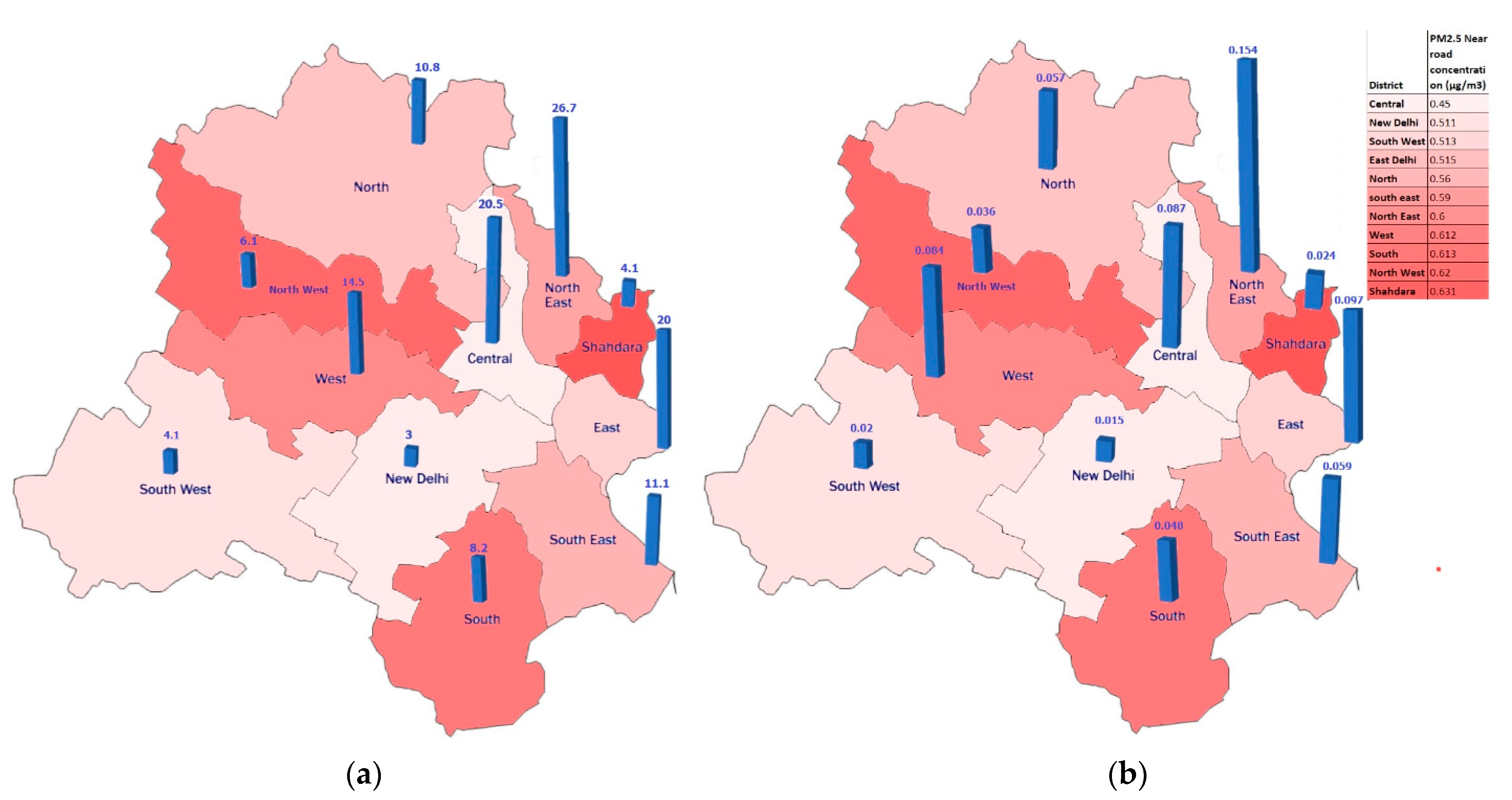
| Mortality/Morbidity | Baseline Incidence per 100,000 |
|---|---|
| Total mortality 1 | 1013 |
| COPD prevalence rate 2 | 818 |
| Type 2 diabetes prevalence rate 2 | 784 |
| Respiratory disease rate 2 | 608 |
| Depressive disorder rate 2 | 633 |
| Diabetes mortality rate 2 | 18 |
| Ischemic/Coronary heart disease prevalence rate 2 | 2321 |
| Cardiovascular mortality 1 | 497 |
| Respiratory mortality 1 | 66 |
| Cancer prevalence rate 4 | 98.8 |
| Lung cancer prevalence rate (LC) 3 | 9.06 |
| Health Endpoint | Valuation (USD) with a Yearly 10% Increase in the Cost of Treatment | Method of Cost Calculation |
|---|---|---|
| Total mortality | 279,411 | VSL approach [41] |
| COPD hospital admissions | 345 | CoI approach [51] |
| Respiratory disease hospital admissions | 80 | CoI approach [51] |
| LC | 1886 | CoI approach [52] |
| Type 2 diabetes | 23,862 | [52,53,54] |
| Coronary heart diseases | 3842 | [55] |
| Depression | 110 | [55,56,57] |
| Cancer | 1065 | [58] |
| Covariates | Willingness to Walk | Willingness to Use Bicycle | ||||
|---|---|---|---|---|---|---|
| OR | p-Value | OR | p-Value | |||
| Intercept | −0.328 | 0.720 | 0.637 | 0.342 | 1.408 | 0.696 |
| Regular travel mode | ||||||
| Public transport | (RC 2) | (RC) | (RC) | (RC) | (RC) | (RC) |
| Private car | −1.421 | 0.241 | <0.001 | −0.740 | 0.477 | 0.035 |
| Motorcycle | −0.853 | 0.426 | 0.018 | −0.692 | 0.501 | 0.042 |
| Distance to cover | ||||||
| Short distance | (RC) | (RC) | (RC) | (RC) | (RC) | (RC) |
| Long distance | 0.102 | 1.107 | 0.741 | 1.172 | 3.228 | 0.066 |
| Monthly Income | ||||||
| Low | 0.147 | 1.158 | 0.716 | −0.017 | 0.983 | 0.963 |
| Medium | (RC) | (RC) | (RC) | (RC) | (RC) | (RC) |
| High | 1.482 | 4.402 | 0.005 | 0.603 | 1.828 | 0.242 |
| Education level | ||||||
| Illiterate | 1.261 | 3.529 | 0.023 | 1.089 | 2.971 | 0.041 |
| Primary to secondary | (RC) | (RC) | (RC) | (RC) | (RC) | (RC) |
| Higher education | 0.779 | 2.179 | 0.051 | 0.321 | 1.379 | 0.351 |
| Age group | ||||||
| Young | (RC) | (RC) | (RC) | (RC) | (RC) | (RC) |
| Middle-aged | −1.011 | 0.364 | 0.102 | −2.233 | 0.107 | 0.002 |
| Old | −0.961 | 0.383 | 0.193 | −2.925 | 0.054 | <0.001 |
| Gender | ||||||
| Male | 0.371 | 1.449 | 0.264 | 0.557 | 1.745 | 0.076 |
| Female | (RC) | (RC) | (RC) | (RC) | (RC) | (RC) |
| 0.112 | 0.100 | |||||
| 0.128 | 0.120 | |||||
| 0.140 | 0.124 | |||||
| p-value of the Hosmer–Lemeshow test | 0.66 (>0.05) | 0.19 (>0.05) | ||||
| District | Traffic Zone | Per-Hour-Avoided VKM | Near-Roadway-Avoided Concentration (µg/m3) |
|---|---|---|---|
| 1. Northwest | Rohtak Road | 261.3 | 0.62 |
| 2. South | Aurbindo Marg | 235.3 | 0.62 |
| 3. West | Mahatma Gandhi Marg | 232.9 | 0.62 |
| 4. Southwest | Azad Hind Fauz Marg | 172.2 | 0.52 |
| 5. Northeast | Wazirabad Road | 226.3 | 0.60 |
| 6. East | Vikas Marg | 167.7 | 0.52 |
| 7. North | GT Karnal Road | 200.9 | 0.56 |
| 8. Central | Bahadur Shah Zafar Marg | 69.6 | 0.45 |
| 9. New Delhi | Vandemataram Marg | 173.1 | 0.52 |
| 10. Southeast | Mathura Road | 291.7 | 0.59 |
| 11. Shahdara | Chaudhary Charan Singh Marg (AV) | 322.8 | 0.64 |
| Avoided All-Cause Mortality | Coronary Heart Diseases | Depression | Diabetes | Cancer | |
|---|---|---|---|---|---|
| Pooled value of RR with 95% CI | 0.78 | 0.85 | 0.81 | 0.81 | 0.88 |
| Avoided All-Cause Mortality | Respiratory Mortality | Respiratory-Disease-Related Hospital Admissions | COPD | Cardiovascular Mortality | LC | |
|---|---|---|---|---|---|---|
| Pooled value of RR with 95% CI | 1.0069 | 1.0077 | 1.0114 | 1.0173 | 1.0076 | 1.0472 |
| District | CVD | Depression | Type 2 Diabetes | Cancer | COPD | LC | HA | RM | CVM |
|---|---|---|---|---|---|---|---|---|---|
| Northwest | 13.93 | 4.98 | 6.16 | 0.46 | 0.004 | 0.001 | 0.045 | 0.003 | 0.018 |
| South | 18.67 | 6.67 | 8.26 | 0.62 | 0.005 | 0.001 | 0.059 | 0.004 | 0.024 |
| West | 33.03 | 11.8 | 14.62 | 1.09 | 0.009 | 0.001 | 0.104 | 0.006 | 0.041 |
| Southwest | 9.19 | 3.28 | 4.07 | 0.3 | 0.002 | 0.001 | 0.025 | 0.002 | 0.01 |
| Northeast | 61.05 | 21.82 | 27.02 | 2.02 | 0.016 | 0.002 | 0.192 | 0.011 | 0.076 |
| East | 45.81 | 16.37 | 20.28 | 1.52 | 0.01 | 0.001 | 0.121 | 0.007 | 0.048 |
| North | 24.58 | 8.78 | 10.88 | 0.81 | 0.006 | 0.001 | 0.071 | 0.004 | 0.028 |
| Central | 46.82 | 16.73 | 20.72 | 1.55 | 0.009 | 0.001 | 0.109 | 0.006 | 0.043 |
| New Delhi | 6.85 | 2.44 | 3.03 | 0.22 | 0.002 | 0.001 | 0.018 | 0.001 | 0.008 |
| Southeast | 25.33 | 9.05 | 11.21 | 0.84 | 0.006 | 0.001 | 0.073 | 0.004 | 0.029 |
| Shahdara | 9.19 | 3.28 | 4.07 | 0.3 | 0.003 | 0.001 | 0.03 | 0.002 | 0.012 |
| Mortality | Morbidities | Economic Impacts | ||||||
|---|---|---|---|---|---|---|---|---|
| All-Cause Mortality (PA and AP) | CHD | Depression | Type 2 Diabetes | Cancer | COPD | LC | HA | Avoided Cost (Million USD) |
| 17529 | 39,707 | 14,190 | 17,575 | 1319 | 20 | 1.8 | 248 | 4869.8 |
Publisher’s Note: MDPI stays neutral with regard to jurisdictional claims in published maps and institutional affiliations. |
© 2022 by the authors. Licensee MDPI, Basel, Switzerland. This article is an open access article distributed under the terms and conditions of the Creative Commons Attribution (CC BY) license (https://creativecommons.org/licenses/by/4.0/).
Share and Cite
Bhat, T.H.; Farzaneh, H.; Toosty, N.T. Co-Benefit Assessment of Active Transportation in Delhi, Estimating the Willingness to Use Nonmotorized Mode and Near-Roadway-Avoided PM2.5 Exposure. Int. J. Environ. Res. Public Health 2022, 19, 14974. https://doi.org/10.3390/ijerph192214974
Bhat TH, Farzaneh H, Toosty NT. Co-Benefit Assessment of Active Transportation in Delhi, Estimating the Willingness to Use Nonmotorized Mode and Near-Roadway-Avoided PM2.5 Exposure. International Journal of Environmental Research and Public Health. 2022; 19(22):14974. https://doi.org/10.3390/ijerph192214974
Chicago/Turabian StyleBhat, Tavoos Hassan, Hooman Farzaneh, and Nishat Tasnim Toosty. 2022. "Co-Benefit Assessment of Active Transportation in Delhi, Estimating the Willingness to Use Nonmotorized Mode and Near-Roadway-Avoided PM2.5 Exposure" International Journal of Environmental Research and Public Health 19, no. 22: 14974. https://doi.org/10.3390/ijerph192214974
APA StyleBhat, T. H., Farzaneh, H., & Toosty, N. T. (2022). Co-Benefit Assessment of Active Transportation in Delhi, Estimating the Willingness to Use Nonmotorized Mode and Near-Roadway-Avoided PM2.5 Exposure. International Journal of Environmental Research and Public Health, 19(22), 14974. https://doi.org/10.3390/ijerph192214974











